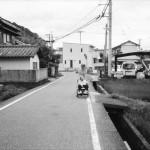Marco Gualazzini: The girls of Mogadishu are heading back to the beach

©Marco Gualazzini, Africa, Somalia, Benadir region, Mogadishu. 26/03/2012. The Catholic cathedral, in the Shangaani neighborhood in the old city of Mogadishu.
I recently had the pleasure to be one of the jurors for the 2017 All About Photo Photo Awards. We were happy to see so much stellar work submitted and one photographer had numerous images that rose to the top. Marco Gualazzini’s compelling and powerful photographs garnered top prize in this year’s awards, work that was part of his project, The girls of Mogadishu are heading back to the beach, focusing on the Benadir region of Mogadishu in Somalia where attempts at normalcy are beginning to reveal themselves.

©Marco Gualazzini, Africa, Somalia, Benadir region, Mogadishu. 24/03/2012. Students study at a Koranic ‘Madrassa’, or school in the Hawl Wadag district. Koranic Tablets.
Born in Parma in 1976, Marco Gualazzini began his career as a photographer in 2004, with his home town’s local daily, La Gazzetta di Parma. His recent works include reportage on microfinance in India, on the freedom of expression in Myanmar, on the discrimination of Christians in Pakistan. For the last few years he has been covering Africa extensively. He devised and took part in the creation of a documentary for the Italian national TV network RAI on the caste system in India, which has been selected at IDFA- The International Documentary Film Festival Amsterdam, and has been awarded with the Best Camera Work Award at the Al-Jazeera International Documentary Film Festival 2014.
Gualazzini’s reportages have been published widely in several national and international titles, and he has been a frequent contributing photographer to The New York Times, to L’Espresso Group. He is represented by CONTRASTO Agency – www.contrasto.it
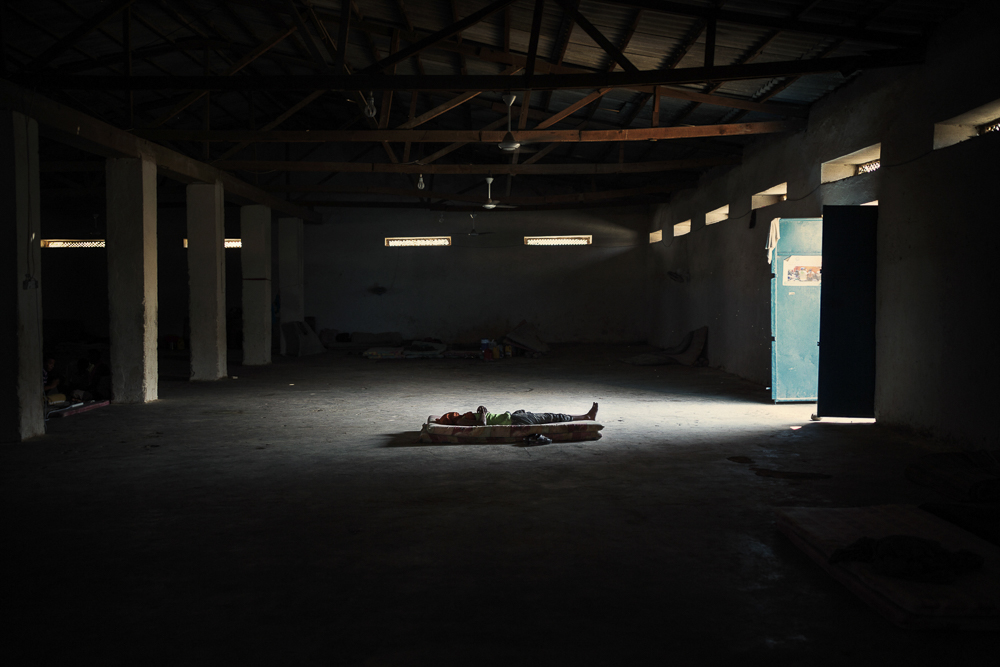
©Marco Gualazzini, Africa, Somalia, Bosaso. 5/10/2015. Abdelaziz Ahmed Abbas, 49 years old, from Aden, Yemen, lost his wife and 5 of his 6 children. Only a son survived the war. He fled to Bosaso with other Somali returnees and Refugees from Yemen. He got hospitality at the Reception Centre A: one of the two centres in Bosaso that hosts Yemenite refugees and Somali returnees (Somali people who fled to Yemen from the war in Somalia) arriving in Somalia to escape the war that broke out in Yemen in April. To the question “Now, what are you going to do?” he replied: I do not know.
The girls of Mogadishu are heading back to the beach
There are over a million internally displaced people in Somalia. A further million have found refuge in the bordering countries or in Europe. Yet a historical and geo-political paradox has also made this “failed state” – a symbol of war on earth – a land of welcome.
Over 30,000 Yemenites have already arrived on the coasts of Somalia, in flight from the Arabian Peninsula where a fierce war is raging, and found a welcome in a country that for 25 years has known nothing but anarchy and chaotic military rule.
The help the Somali people are offering the Yemenites is indicative of the desire for change afoot in the former Italian colony.
The TFG troops, aided by AMISOM, are gaining ground, while Al-Shabaab is using a new terror technique in an attempt to destabilise the capital, which, on paper, has been definitively rid of the Islamists: from a fight for position on the ground, Shabaab has shifted towards a new Al-Qaeda-style, under-ground, asymmetric strategy that seeks to accentuate the sense of precari-ousness among a people already devastated by decades of conflict and famine.
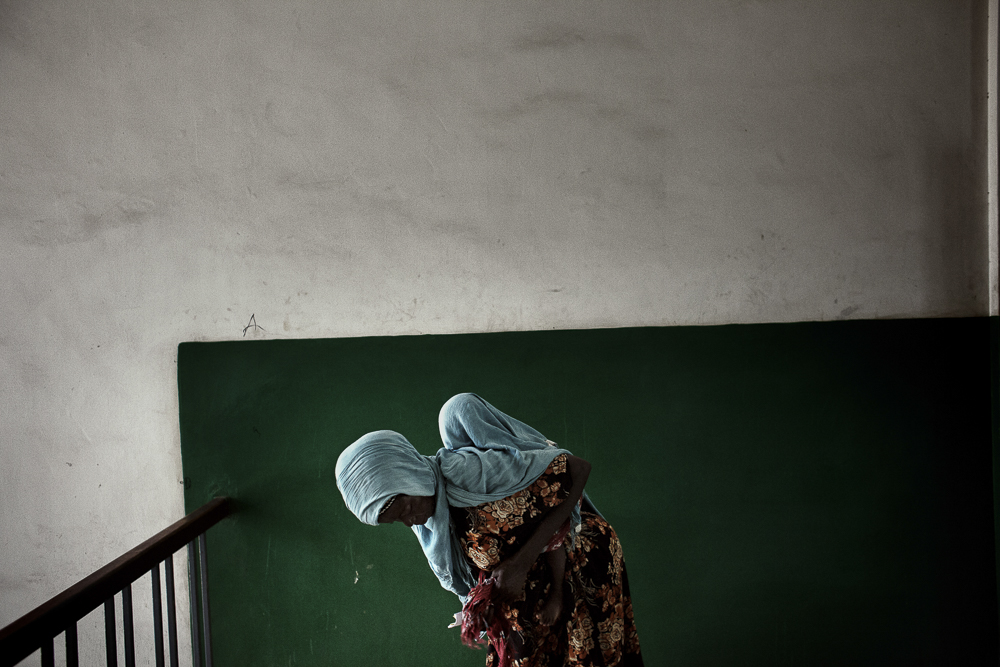
©Marco Gualazzini, Africa, Somalia, Benadir region, Mogadishu. 22/03/2012. Banadir hospital, the main hospital of Mogadishu. A mother and her child.
The TFG troops, aided by AMISOM, are gaining ground, while Al-Shabaab is using a new terror technique in an attempt to destabilise the capital, which, on paper, has been definitively rid of the Islamists: from a fight for position on the ground, Shabaab has shifted towards a new Al-Qaeda-style, under-ground, asymmetric strategy that seeks to accentuate the sense of precariousness among a people already devastated by decades of conflict and famine.
The terrorists are striking those places symbolic of Somali recovery: the Lido Beach, Villa Somalia, the airport, hotels and cafés. They are seeking to break the nation’s heart. Physically killing people is of little importance to them; it seems little more than a side effect. Their real objective is to shatter the soul of the country, to destroy all hope.
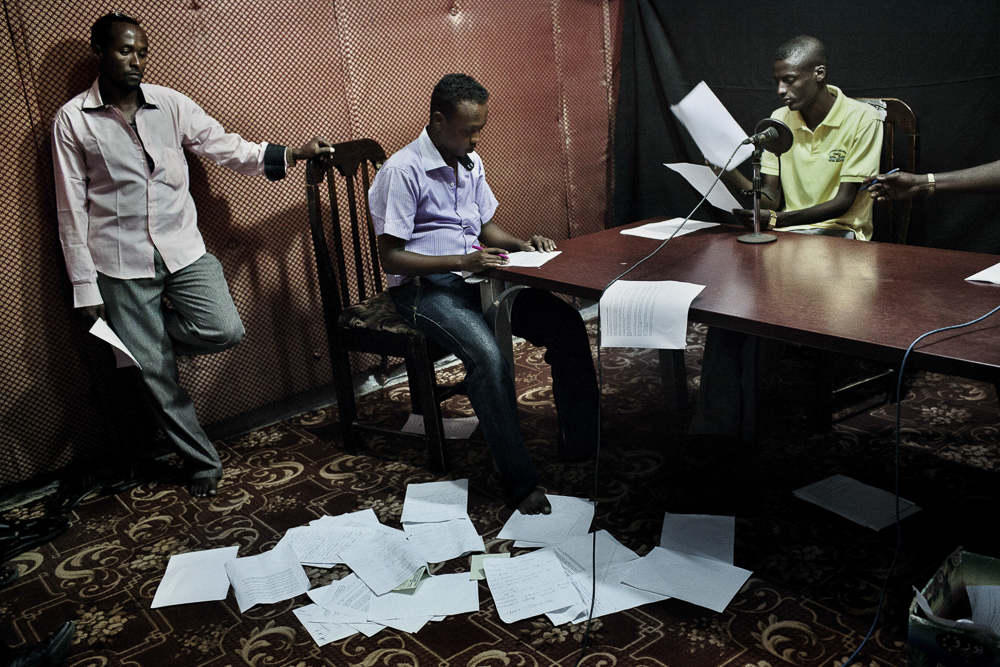
©Marco Gualazzini, Africa, Somalia, Benadir region, Mogadishu. 22/03/2012. Radio Shabelle, an independent Somali network. 8 of its journalists have been killed in the course of their work since 2007.
From Bosaso to Kismayo, the desire to rise up from the ashes is palpable, visible: men and women are rolling up their sleeves, cleaning the streets, clearing the rubble from buildings riddled with gunfire, standing there abandoned as a warning of what war can do; ominous shells left standing for the last 25 years as if to whisper in the ear of the fearful as they scuttle past “Do not dare to hope!” Those days are gone. 2017 is a turning point. This country in the Horn of Africa is holding its first free elections since 1969. Shabaab is multiplying its suicide attacks to prevent voters reaching polling stations; a whole culture is being overturned. Those who created it have shot and killed, but finally, they are on the losing side.
A counter-diaspora is under way, with many – young and old – leaving safe ground to return home. They are building, investing, coming together and encouraging one another.

©Marco Gualazzini, Africa, Somaliland, Hargeisa. 03/10/2011. Shooting a tv programme at the “Somaliland National TV” studios.
Beauty parlours and nightclubs are opening up; young folks are timidly starting to play music before live audiences, practice sport in shorts in the stadiums and make their voices heard in politics. Let this roar of hope drown out the roar of the bombs going off at the checkpoints: the girls of Mogadishu are heading back to the beach!
This what I’m working on: a collection of stories that illustrate the heroic, soli-darity-fuelled actions that take place here every day, brimming with hope. Some international media have already reported on them, but the picture re-mains fragmentary. My aim is to piece them together and catalogue them into a single reportage.

©Marco Gualazzini, Africa, Somalia, Baidoa. 14/10/2015. Mr.Abdirashid Abdullahi Mohamed (The Governor Of Bay Region Somalia) ’s escort patrol the area around the former palace of President, now completely destroyed by war. Baidoa is one of the most important cities of Somalia. In the 90’s became the hardest place hit by the famine. In the 2000s it became a provisional capital of the country and in 2009 fell under the control of Al Shabaab. Since 2012 he has been freed from the AMISOM forces but remains one of the most persistently targeted Somali cities by the terrorist attacks.
This reportage seeks to shed light on these little examples of resilience, these baby steps that are being taken all over the country, in order to promote an awareness of change and to show these people the importance of their efforts, and that they’re not alone.
Promoting and illustrating these indications of change throughout the country is also designed to raise awareness among development agencies and local authorities, so that these moves can be emulated on a larger scale.
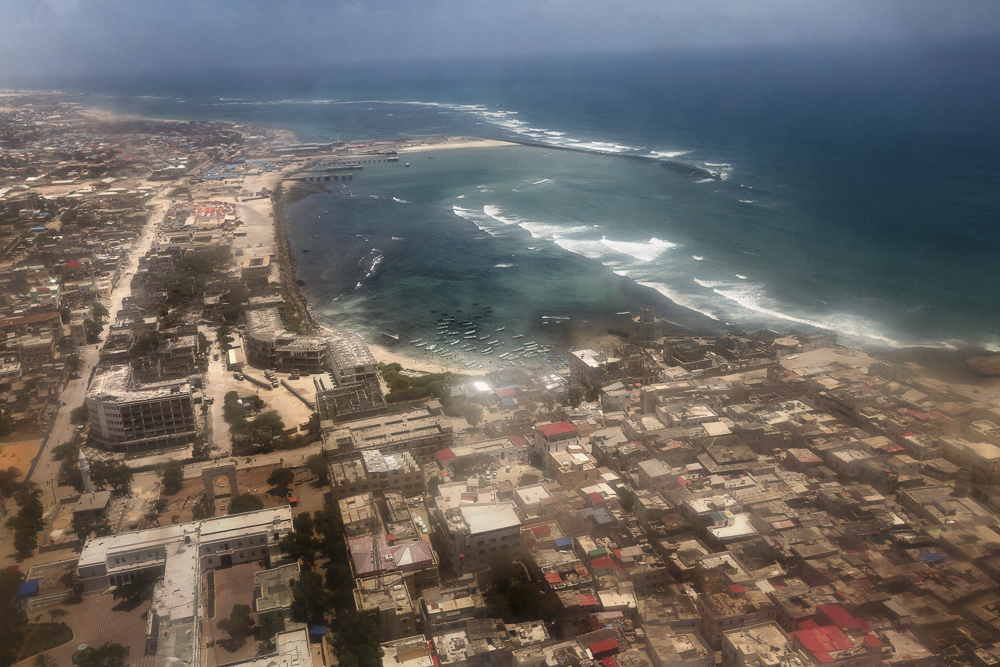
©Marco Gualazzini, Africa, Somalia, Mogadishu. 16/10/2015. Mogadishu from above. The present of the Somali capital. Behind it, a civil war lasting 25 years; ahead of it, a future of rebirth. Mogadishu is at a crossroads. On the one side, the persistence of a surreptitious conflict based on a new, asymmetrical strategy of terror with Al-Shabaab, yet on the other, a desire for a return to normal life on the part of the Somali people, who are timidly seeking to carve out a role for themselves.

©Marco Gualazzini, Africa, Somalia, Mogadishu. 10/10/2015. A man carries a huge hammerhead through the streets of Mogadishu. A recent escalation of plunders of Somali waters by foreign fishing vessels could mean the return of hijackings, locals warn. The country’s waters have been exploited by illegal fisheries and the economic infrastructure that once provided jobs has been ravaged.
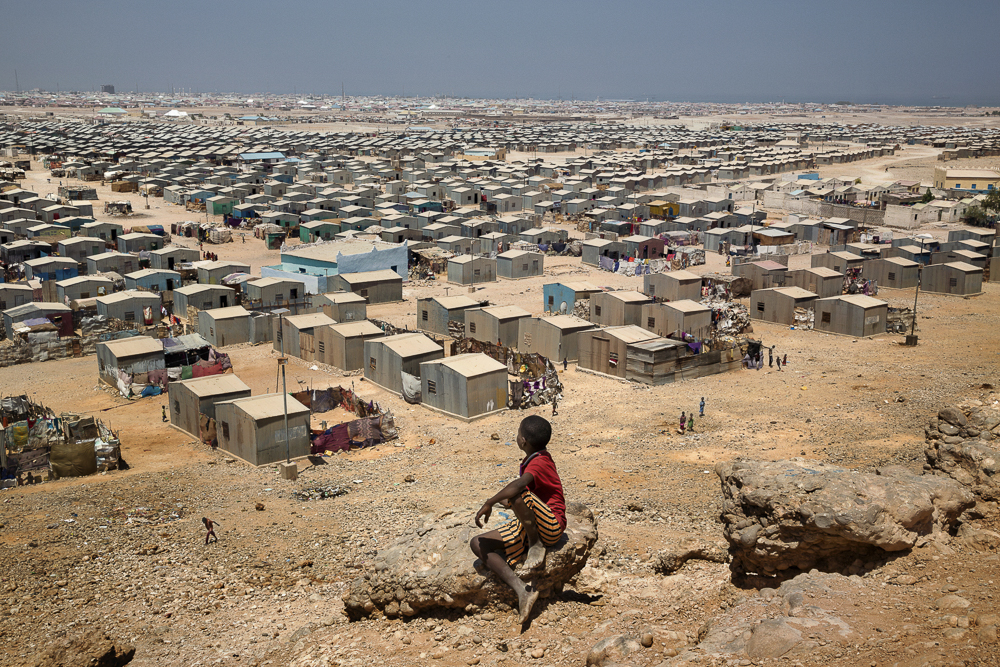
©Marco Gualazzini, Africa, Somalia, Bosaso. 05/10/2015. Bosaso: the coastal city of 700,000 inhabitants. It is the main port of Somalia and it is the capital of Puntland; this macro-northern region, compare to the rest of the country, enjoys of a relative political and military stability. A kid look at the Buulo Mingis Settlement IDP camp.
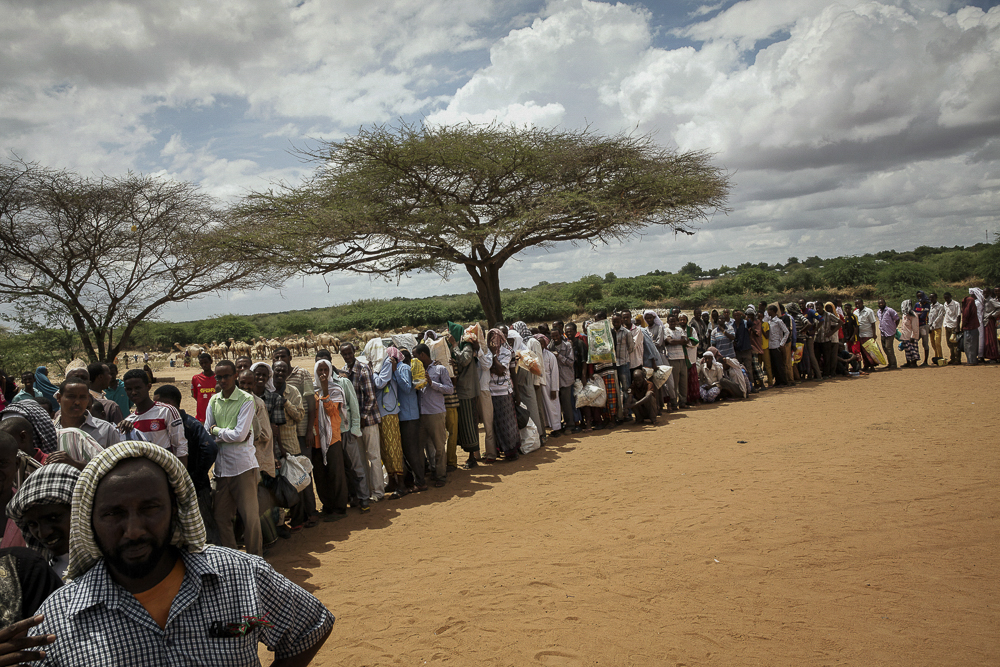
©Marco Gualazzini, Africa, Kenya, Dadaab. 01/03/2016. Dadaab remains the largest refugee camp in the world, with more than 350,000 inhabitants, 95% of them from Somalia. Located in a semi-arid region of Kenya, 80 km from the Somali border, the camp arose in the Nineties to contain the displaced fleeing from the civil war in Somalia, and has continued to expand since then. Today it is composed of 5 large tent cities spread over more than 50 km. The first week of every month, for five days, food is distributed in Dadaab. All 350,000 refugees report to the distribution points where the WFP distributes food rations. For each member, families are given a monthly ration of 3.5kg of corn, 3kg of flour, 1.8kg of pulses, 1.85lt of oil, 1kg of CSB (Corn-Soya Blend) and 150g of salt.
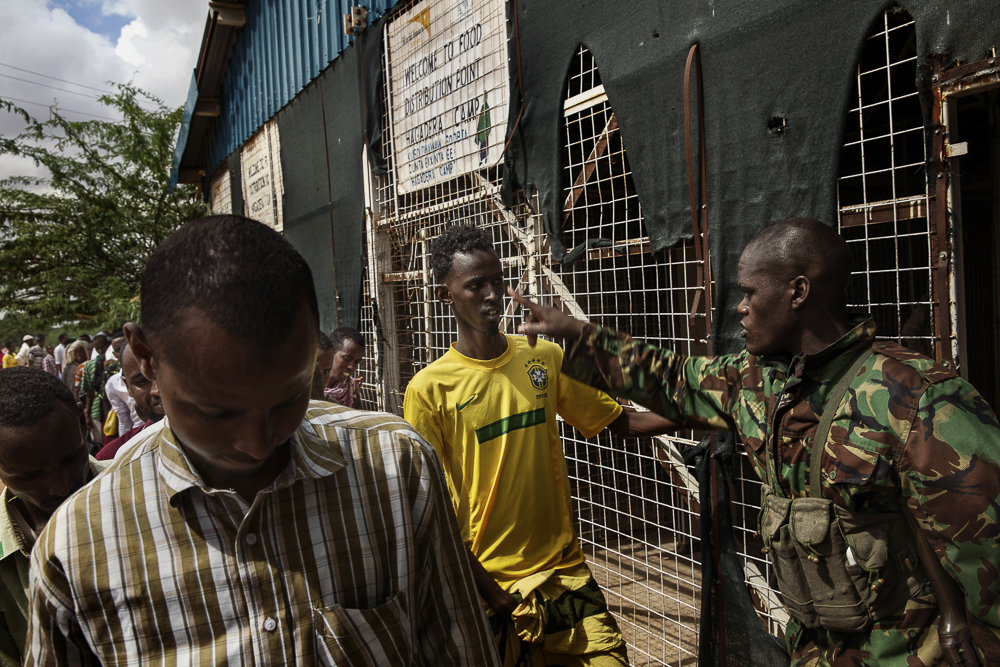
©Marco Gualazzini, Africa, Kenya, Dadaab. 01/03/2016. Dadaab remains the largest refugee camp in the world, with more than 350,000 inhabitants, 95% of them from Somalia. Located in a semi-arid region of Kenya, 80 km from the Somali border, the camp arose in the Nineties to contain the displaced fleeing from the civil war in Somalia, and has continued to expand since then. Today it is composed of 5 large tent cities spread over more than 50 km. The first week of every month, for five days, food is distributed in Dadaab. All 350,000 refugees report to the distribution points where the WFP distributes food rations. For each member, families are given a monthly ration of 3.5kg of corn, 3kg of flour, 1.8kg of pulses, 1.85lt of oil, 1kg of CSB (Corn-Soya Blend) and 150g of salt. A moment of tension at the queue for the food distribution.

©Marco Gualazzini, Africa, Kenya, Dadaab. 25/02/2016. Dadaab remains the largest refugee camp in the world, with more than 350,000 inhabitants, 95% of them from Somalia. Located in a semi-arid region of Kenya, 80 km from the Somali border, the camp arose in the Nineties to contain the displaced fleeing from the civil war in Somalia, and has continued to expand since then. Today it is composed of 5 large tent cities spread over more than 50 km. The first week of every month, for five days, food is distributed in Dadaab. All 350,000 refugees report to the distribution points where the WFP distributes food rations. For each member, families are given a monthly ration of 3.5kg of corn, 3kg of flour, 1.8kg of pulses, 1.85lt of oil, 1kg of CSB (Corn-Soya Blend) and 150g of salt. A moment of tension at the queue for the jerry can distribution.
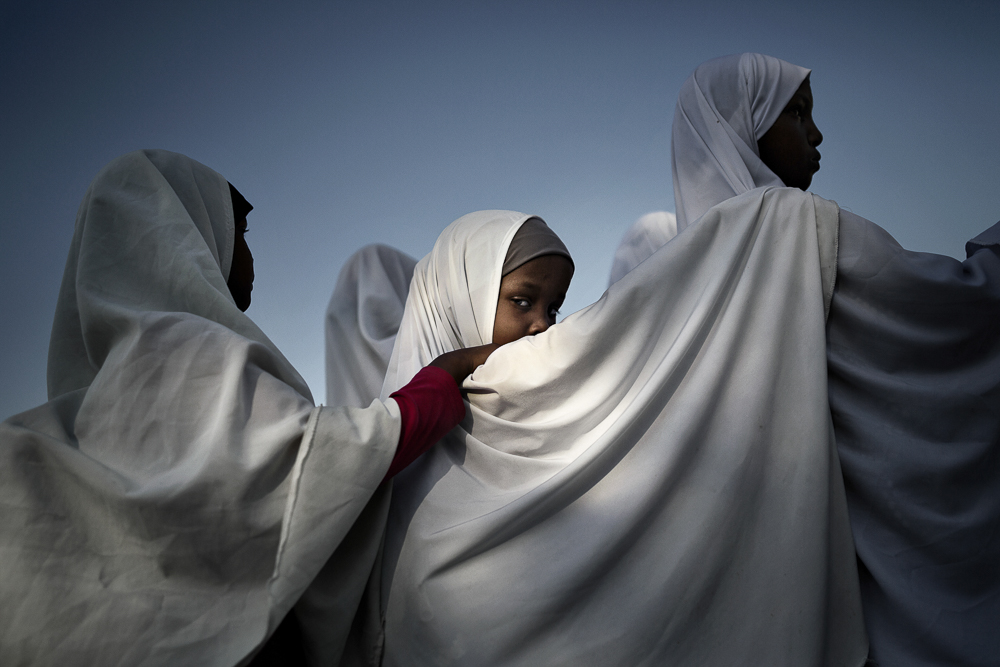
©Marco Gualazzini, Africa, Somalia, Bosaso. 06/10/2015 Haji Mire Primary School in Bosaso, with 9 classes where children study English, Arabic, Maths, Physics and the Koran. Bosaso: the coastal city of 700,000 inhabitants. It is the main port of Somalia and it is the capital of Puntland; this macro-northern region, compare to the rest of the country, enjoys of a relative political and military stability.
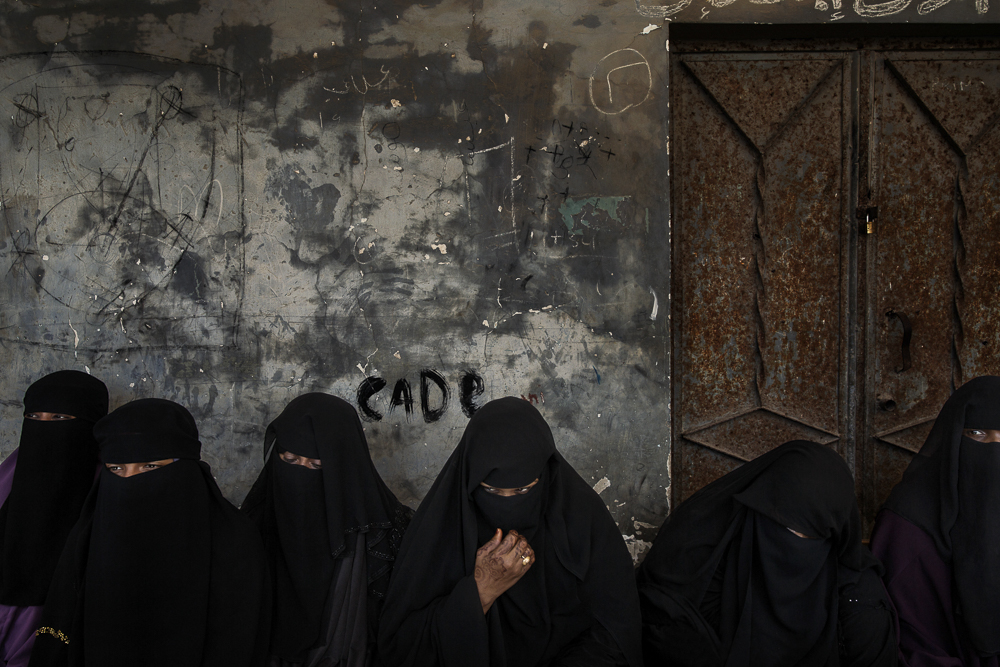
©Marco Gualazzini, Africa, Somalia, Mogadishu. 12/10/2015. Women Refugees from Yemen in a queue waiting the distribution of the UCT. Unconditional Cash Transfer and Emergency medical support is provided to the Yemeni Refugees and Returnees in Bexani Medical Clinic Center of Mogadishu. The Project is implemented by IRC and Funded by DFID under the IRF project.
Posts on Lenscratch may not be reproduced without the permission of the Lenscratch staff and the photographer.
Recommended
-
Arnold Newman Prize: C. Rose Smith: Scenes of Self: Redressing PatriarchyNovember 24th, 2025
-
Celebrating 20 Years of Critical Mass: Cathy Cone (2023) and Takeisha Jefferson (2024)October 1st, 2025
-
Celebrating 20 Years of Critical Mass: George Nobechi (2021) and Ingrid Weyland (2022)September 30th, 2025
-
Celebrating 20 Years of Critical Mass: Amy Friend (2019) and Andrew Feiler (2020)September 29th, 2025
-
Celebrating 20 Years of Critical Mass: Jennifer McClure (2017) and JP Terlizzi (2018)September 28th, 2025












